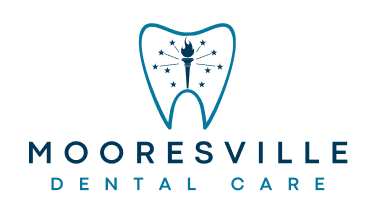Why would I need an x-ray?
Early tooth decay does not tend to show many physical signs. Sometimes the tooth looks healthy, but your dental team will be able to see from an x-ray whether you have any decay under the enamel, any possible infections in the root, or any bone loss around the tooth.
X-rays can help the dental team to see in between your teeth or under the edge of your fillings. Finding and treating dental problems at an early stage can save both time and money.
In children, x-rays can be used to show where the adult teeth are and when they will appear. They are also used in the same way for adults when the wisdom teeth start to come through.
How often should I have x-rays?
If you are a new patient, unless you have had dental x-rays very recently, the dental team will probably suggest having x-rays. This helps them assess the condition of your mouth and to check for any hidden problems. After that, x-rays may be recommended every 6 to 24 months depending on the person, their history of decay, their age and the condition of their mouth.
Who do the x-rays belong to?
X-rays are an essential part of your health records. If you are entitled to copies of your records, you may have to pay for these copies. If you change dentists, your x-rays and records will not usually be needed by your new dentist. However, if they are important, your new dental team will let you know. They will either ask for your permission to send them or ask you to fetch them yourself.
What will an x-ray show?
X-rays can show decay that may not be seen directly in the mouth: for example, under a filling, or between the teeth. They can show whether you have an infection in the root of your tooth and how severe the infection is.
In children, an x-ray can show any teeth that haven’t come through yet, and show the dental team whether there is enough space for the teeth to come through. In adults, it can show any impacted wisdom teeth that may need to be removed, before they cause any problems.
Are x-rays dangerous?
The amount of radiation received from a dental x-ray is extremely small. We get more radiation from natural sources, including minerals in the soil, and from our general environment.
With modern techniques and equipment, risks are kept as small as possible. However, your dental team will always take care to use x-rays only when they need to.
NEW TECHNOLOGY- DEXSHEILD X-RAY SHEILD
The DEXsheild is a black ring that focuses the radiation produced by an X-Ray beam to the exact dimensions of our digital sensors.
When receiving medical, dental, or pharmaceutical care, safety is everyone’s main concern. Adverse reactions, side effects, and allergies can all make a treatment undesirable or unrealistic for your personal needs. As such, our office is always looking for new ways to minimize any potential risks while maximizing our patients’ wellness. Most recently, we have updated our X-Ray safety protocol to include the new DEXsheild radiation shield.
For starters, it is important to note that dental X-rays are an extremely safe and useful diagnostic tool. A standard dental X-ray produces roughly a quarter of the radiation you would receive on any given day. Yearly, it represents a negligible fraction of radiation exposure that our bodies absorb from the sun, consumer electronics, and other sources. At our office, we further minimize any risks by utilizing high-sensitivity digital X-ray sensors, radiation aprons with thyroid collars, and modern X-ray beams. In short, we make sure every patient is safe and protected to standards exceeding those laid out by the ADA and other governing bodies.
The DEXsheild fits into our current safety standards by narrowing the beam of radiation that the patient is exposed to. We have always used devices called collimated X-ray beams. Here, a thick metal tube essentially focuses the radiation produced by the beam on the oral region. While the sensor can detect and develop an image, the rest of your body is largely unexposed to any X-rays. The DEXsheild works by taking the place of a standard targeting ring (the red, blue and yellow rings we have on the outside of the sensor holders) and blocking the released radiation to the exact dimensions of the sensor. It essentially functions as a secondary safety apron, but for your mouth!
X-rays represent an indispensable tool at any dental office. The information provided from a few quick photographs can give us a fantastic perspective into if a tooth is healthy, why it might be hurting, or what we can do to repair it. We also understand that many patients are concerned about radiation exposure and want to know how we are keeping them safe. If you have any questions or concerns about ANY of our safety protocols, please give us a call. Our patient’s safety is our primary concern and we are happy to alleviate any of your worries!
https://www.thousandoaksfamilydentistry.com/blog/tag/dental+x-ray

 Review Us
Review Us  Review Us
Review Us